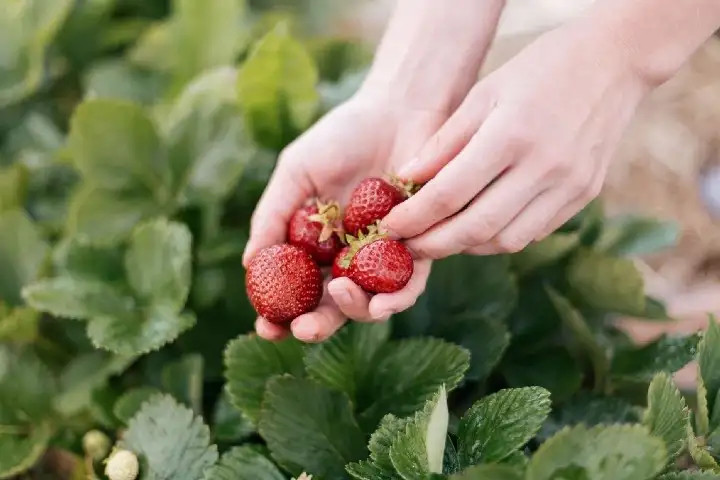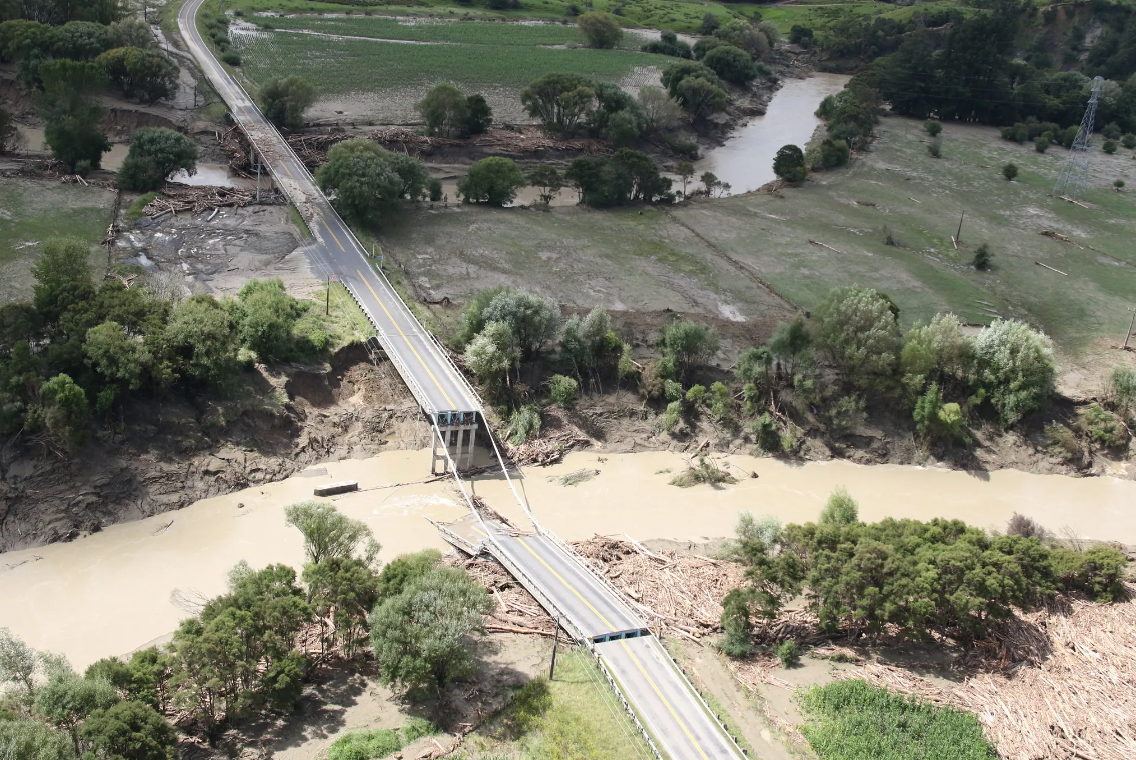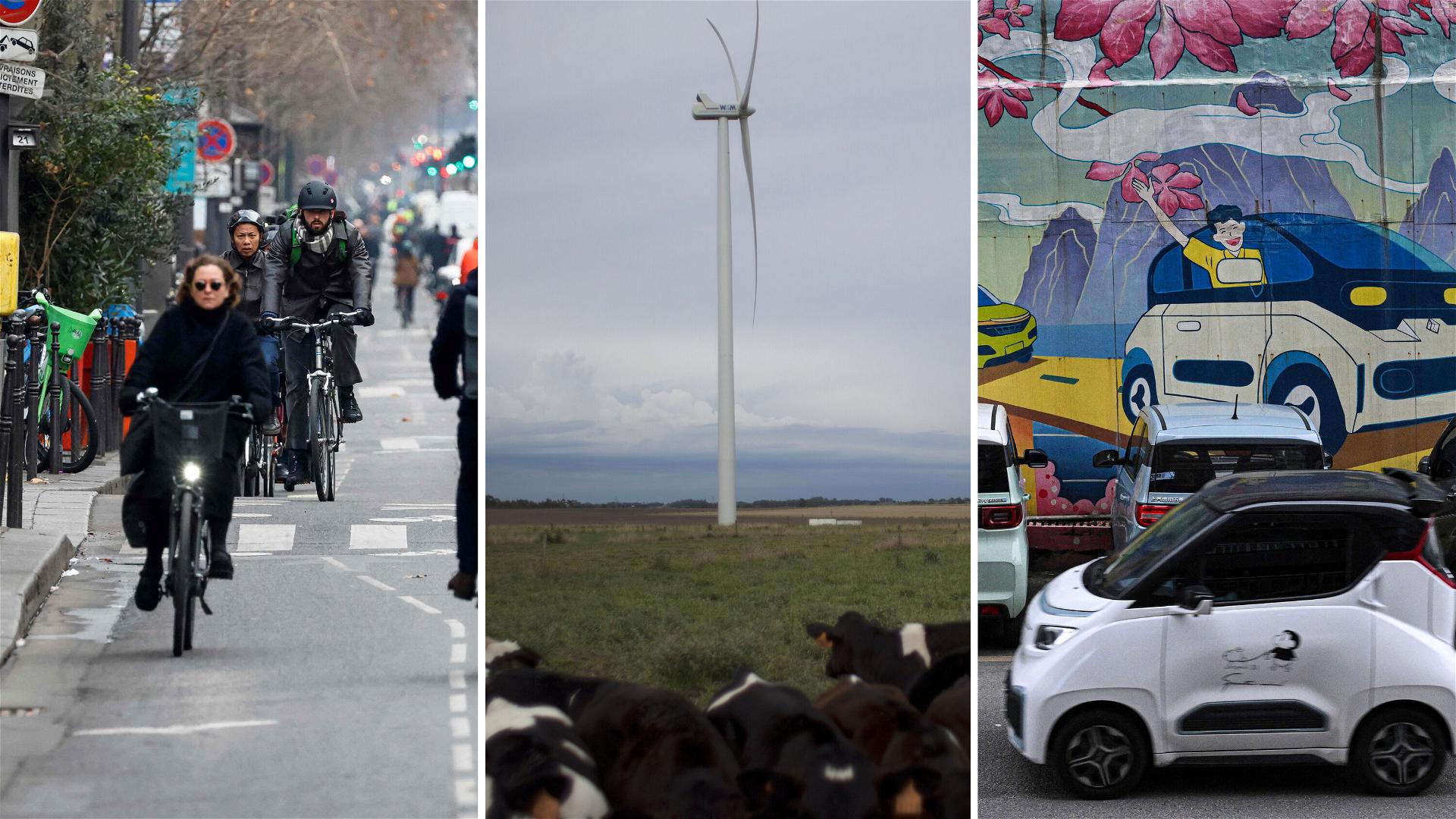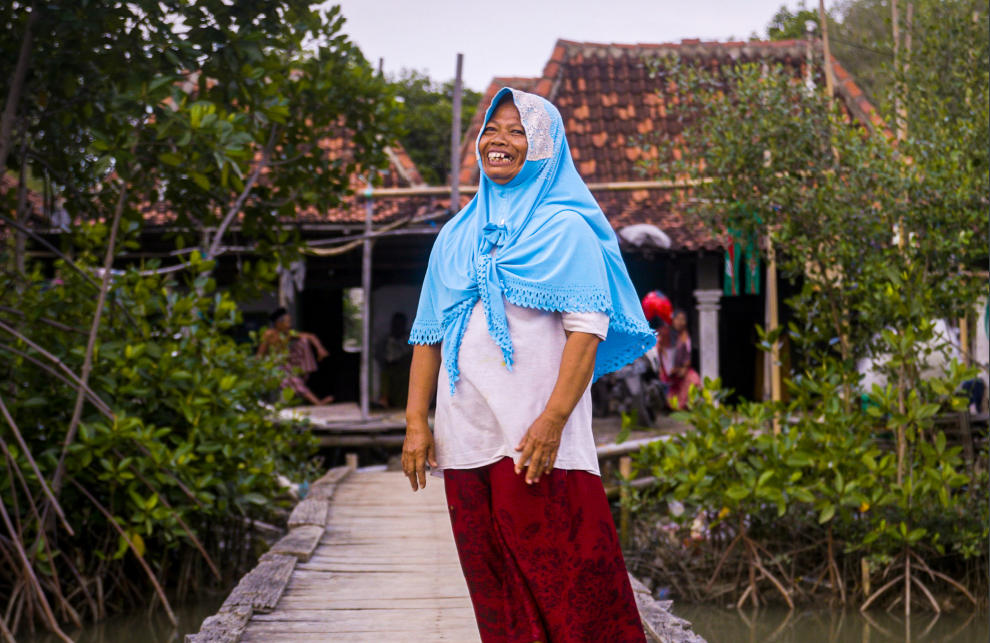· 6 min read
The Circular Food Innovation Lab (CFIL) is split roughly into two phases. Following our initial Kick-off Session where we identified the stuck patterns related to the challenge we are working on and did some initial ideation, Phase 1 took place from late April — August 2022 and had 3 main stages/activities/components:
- Preliminary site visits
- Concept Development + Pitching
- Rapid Prototyping
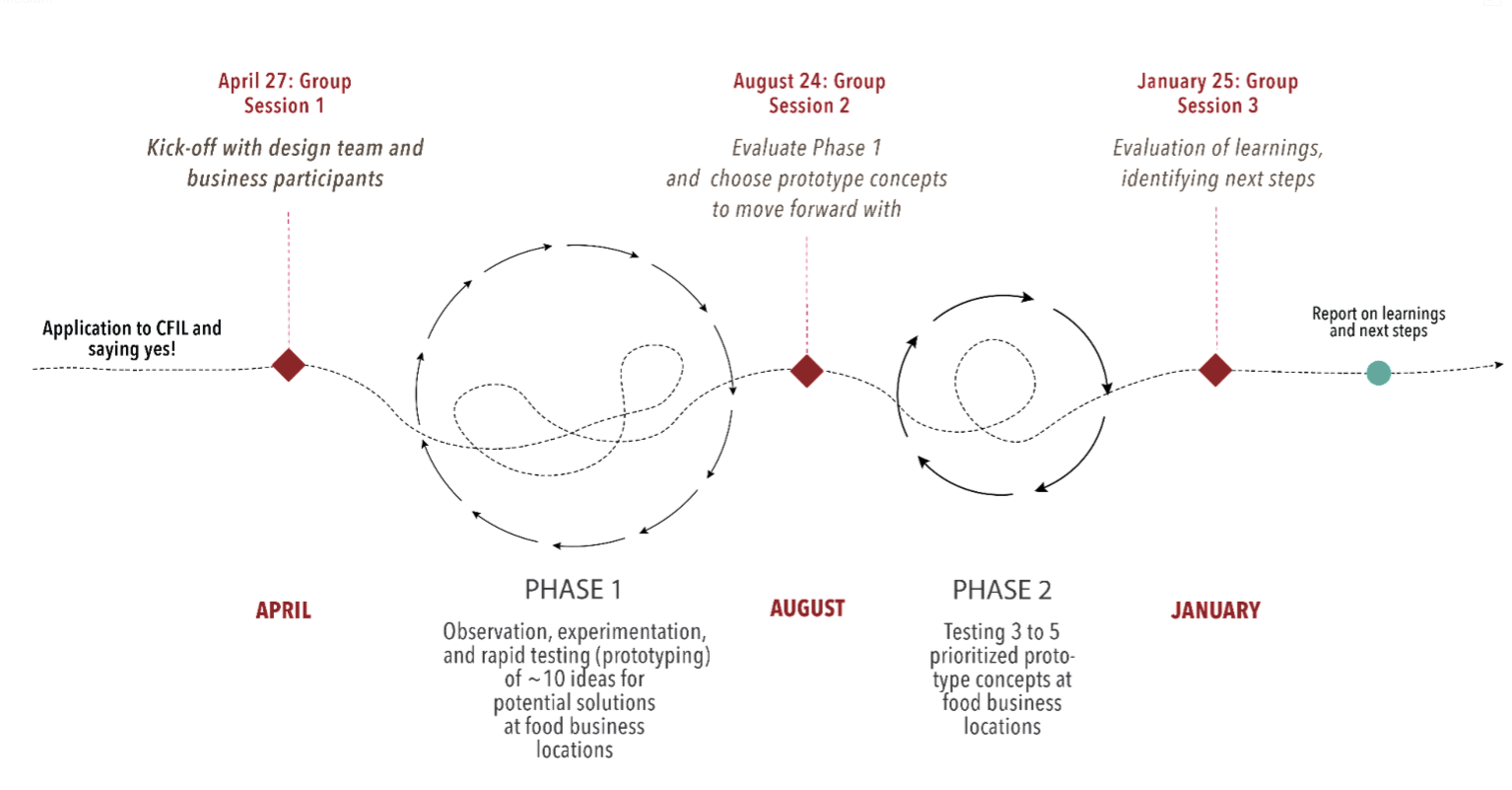
Preliminary Site Visits
Right after our initial kick-off session, which took place virtually, the CFIL design team went on a preliminary site visit to each of the participating businesses’ locations over a 3-week period. The purpose of these visits was to get an on-the-ground understanding of the contexts, challenges, structures, and possibilities that were raised by CFIL business collaborators during the session. It was also an opportunity to get to know everyone better, given that we started out virtually.
Guided by a core set of action research ethics and principles, the priority was establishing and building relationships and to understand the following:
- Values and paradigms around waste: What values, paradigms, attitudes, and behaviors are at play in the relationships between food and conception of waste?
- Organizational relationships: What is the organizational culture and structure of the business and how does this affect relationships to food?
- Physical Infrastructure: What is the physical infrastructure that relates to how food + waste + loss is handled?
The CFIL Design Team developed an Action Research Workbook to document what they heard and observed, as well as insights that were generated about the larger system.
Concept Development + Pitching
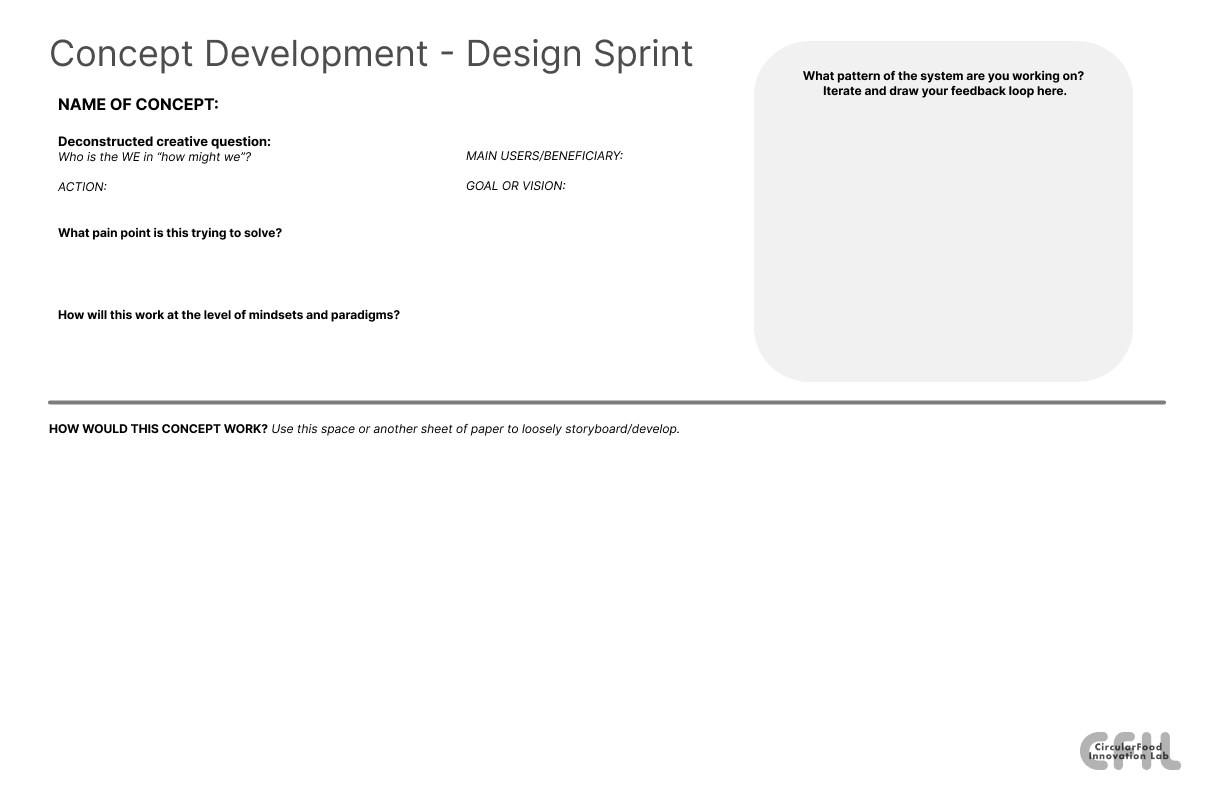
The insights gathered from the site visits and the kick-off session fed into concept development. We used a modified version of the Design Sprint structure to synthesize our learnings about the challenge, surface patterns where we are stuck in the system, generate creative questions and ideas, and do some very initial concept development. The concepts we developed were based on where we thought intervention on the dominant system might be possible. They were also meant to be fractals, or a smaller scale component of our larger overall lab question. Concepts were purposefully loosely developed in order to give the business collaborators ample opportunity to shape them.
We developed seven initial concepts that we pitched to businesses including:
- Reframe: How might we reframe the value of all foods through transparency to consumers regarding the journey of food, how much energy went into its production, and how important it is to treat it all the same?
- Last Call: How might we re-purpose food at the end of day in stores so that we create a market that: reaches different customers; celebrates cultural diversity; stimulates community connection
- Circular Entrepreneurship How might we create new, support and/or scale existing enterprises or opportunities from wasted or latent assets and resources within the food system so that we can foster a culture of circular and equitable entrepreneurship in Vancouver?
- Nourishing Staff Engagement: How might we enable staff to be a part of growing circularity in the workplace so that livelihoods are supported while shifting to a circular food system?
- Peer-to-Peer Network: How might we create an online space that encourages and simplifies connection between all kinds of food players so that knowledge can be shared and action against food waste can be tackled as a community?
- Measure What Matters: How might we utilize existing measurement frameworks and platforms for measuring wasted food so that we can share this information with each other, collectively share efforts and responsibilities, and make more impactful decisions in the sector-wide reduction of wasted food?
- Co-creating Collaborative Responsibility: How might we co-imagine and co-create policy and/or regulatory interventions to grow a sense of shared responsibility and accountability between businesses, industry associations, and government partners so that we can enact goals around preventing food waste and directing food where it is most needed?
CFIL business collaborators signed up for the concepts that they were most interested in, and the design team further developed them into testable concepts based on the needs, challenges and aspirations of those who joined for each concept.
What did we Learn from Rapid Prototyping?
- It’s hard to do with minimal touchpoints with co-designers. This was definitely a very stuck-feeling time. Meetings with business collaborators were inconsistent. Summer was a challenging time to try to create some momentum around prototyping because people were away so much, and also because many business collaborators were busy tending to operations related to local food that was in season. We spent a good deal of time trying to figure out how to engage and connect with participants as opposed to learning about the concepts. For me it was really hard to know if learning was actually happening, especially for the business collaborators.
- We need to know that we actually have a prototype. How do we prototype around something so systemic and intangible? From my perspective I found it hard for the lab to find the sweet spot in rapid prototyping where ideas are still loose and exploratory while also making a tangible and real-feeling experience of the idea. Articulating the purpose of the prototype and an actual test question we wanted to answer seemed helpful.
- Relationship-building needs to be prioritized. A lot of Phase 1 was spent online, or in one-on-one meetings with co-designers. This meant that lab participants weren’t meeting one another, and designers and business collaborators didn’t know each other well either. When doing very co-creative work, prioritizing relationships is important for building a collective experience and for deepening trust in the process.
The Pivot for Phase 2
At the end of Phase 1, things felt a bit murky. It didn’t feel like we had learned enough about each of the concepts to know whether we should be narrowing and focusing on a select few to do higher fidelity prototyping around, as was the original intention for Phase 2. We decided that we wouldn’t weed any concepts out at that point, as we hadn’t really gotten going. There were also some process aspects that needed revamping if we were going to try to do this in a more co-creative way with business collaborators.
The main shifts for Phase 2 included:
- More touch-points with business collaborators
- Increased opportunities for connection-building amongst business collaborators
- Centring business collaborators as learners and co-creators

Stay tuned for additional posts about each of the prototypes and what we learned and tried in Phase 2.
This article is also published on Medium. Future Thought Leaders is a democratic space presenting the thoughts and opinions of rising Sustainability & Energy writers, their opinions do not necessarily represent those of illuminem nor CFIL.
